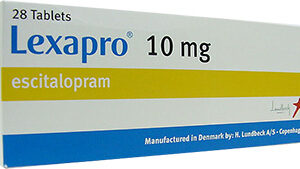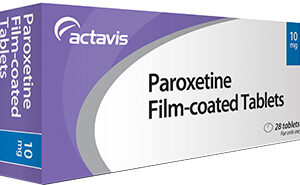Paroxetine Overview
Paroxetine is a selective serotonin reuptake inhibitor (SSRI) used to treat a variety of psychiatric disorders. It is marketed under various brand names, including Paxil, Pexeva, and Brisdelle. Paroxetine is effective in treating conditions such as depression, anxiety disorders, post-traumatic stress disorder (PTSD), obsessive-compulsive disorder (OCD), and premenstrual dysphoric disorder (PMDD).
Formulations and Strengths
Paroxetine is available in immediate-release tablets, controlled-release tablets, and oral suspension. Tablet strengths include 10 mg, 20 mg, 30 mg, and 40 mg. Controlled-release tablets are available in 12.5 mg, 25 mg, and 37.5 mg. The oral suspension is typically formulated at 10 mg/5 mL.
Dosage and Administration
Dosage of paroxetine depends on the condition being treated. For major depressive disorder (MDD), the usual starting dose is 20 mg once daily, often taken in the morning. The dose may be increased after several weeks, not exceeding 50 mg per day for immediate-release formulations and 62.5 mg for controlled-release. For OCD and panic disorder, the maximum recommended dose is 60 mg daily. PMDD treatment typically involves lower doses.
Pharmacological Mechanism
Paroxetine acts by inhibiting the reuptake of serotonin into the presynaptic neuron, increasing the level of serotonin in the synaptic cleft, and enhancing serotonergic neurotransmission. This ultimately leads to its therapeutic effects in mood and anxiety disorders.
Drug Absorption and Metabolism
Paroxetine is well absorbed from the gastrointestinal tract with oral administration. Food does not significantly affect the absorption. After absorption, it is extensively metabolized in the liver, primarily by CYP2D6, and its metabolites are excreted through the urine and feces. Paroxetine has an elimination half-life of approximately 21 hours.
Pharmacokinetics
The pharmacokinetics of paroxetine vary between individuals, particularly due to genetic differences affecting the activity of CYP2D6, the enzyme responsible for its metabolism. Paroxetine displays nonlinear pharmacokinetics, with steady-state plasma concentrations increasing disproportionately with dose due to saturation of first-pass metabolism at higher doses.
Special Populations
Age, pregnancy, liver, and renal function all influence the pharmacokinetics of paroxetine. Elderly patients and those with hepatic or renal impairment require adjusted doses to prevent accumulation of the drug. Paroxetine is classified as Pregnancy Category D, indicating potential risk to the fetus; hence, it should be avoided during pregnancy unless essential.
Drug Interactions
Paroxetine may interact with other medications including MAO inhibitors, serotonergic drugs, warfarin, NSAIDs, aspirin, and other drugs that affect serotonin levels in the brain. It is also known to inhibit the metabolism of other drugs metabolized by CYP2D6, potentially increasing their plasma concentrations.
Adverse Drug Reactions
Common adverse effects associated with paroxetine include nausea, drowsiness, dizziness, insomnia, weakness, dry mouth, sweating, blurred vision, and constipation. Sexual dysfunction, weight changes, and withdrawal syndrome upon discontinuation are also reported.
Monitoring Parameters
Patients prescribed paroxetine should be monitored for clinical worsening or emergence of suicidal thoughts, especially in the first few weeks of therapy or during dosage changes. Regular monitoring includes assessment of mood, anxiety, and any untoward side effects. Blood pressure monitoring is advisable due to the potential for paroxetine to cause serotonin-mediated increases in blood pressure.
Counseling Points
Patients should be counseled to take paroxetine as prescribed, at the same time each day. Paroxetine may cause drowsiness; caution should be advised when operating machinery or driving. Patients should likely avoid alcohol as it may worsen certain side effects. Gradual dose reduction is recommended upon discontinuation to minimize withdrawal symptoms.
Missed Dose Instructions
If a dose of paroxetine is missed, it should be taken as soon as the patient remembers. However, if it is almost time for the next dose, the missed dose should be skipped to avoid doubling up. Patients should not take two doses at the same time.
Storage Requirements
Paroxetine should be stored at room temperature, away from moisture and heat, and kept out of reach of children. The oral suspension should not be frozen and should be discarded after a certain period of time that is drug-specific after the first opening.
Disposal Measures
Unused or expired paroxetine should be disposed of in accordance with local guidelines for medication disposal. Many areas offer take-back programs to prevent potential environmental contamination from improper disposal.







Reviews
There are no reviews yet.